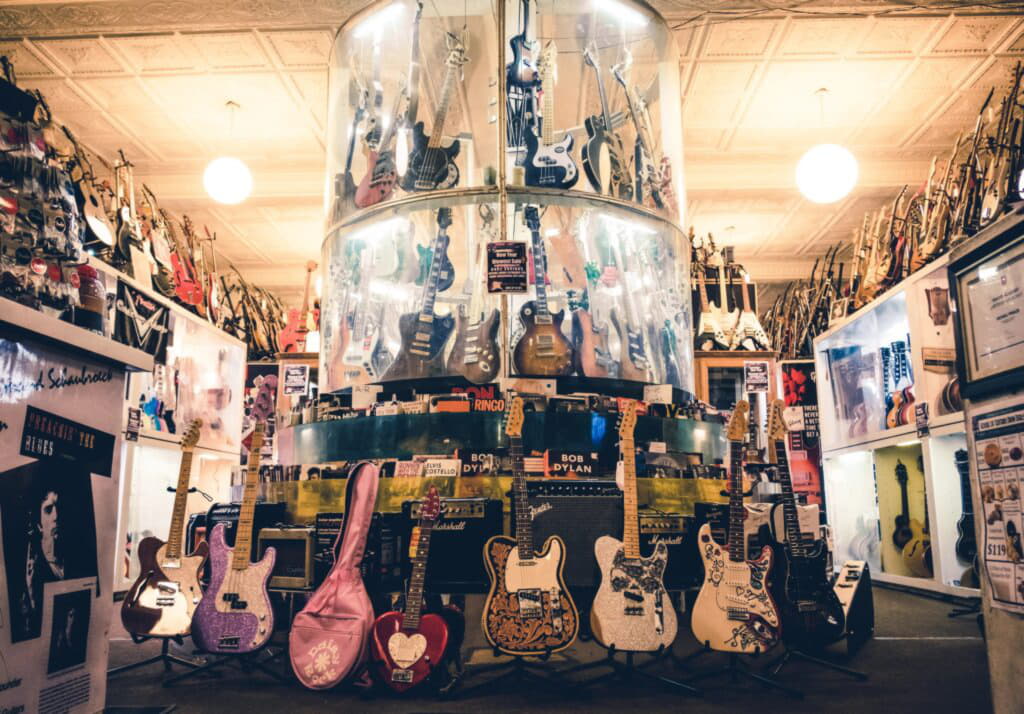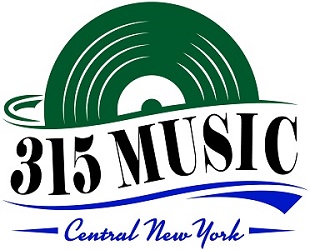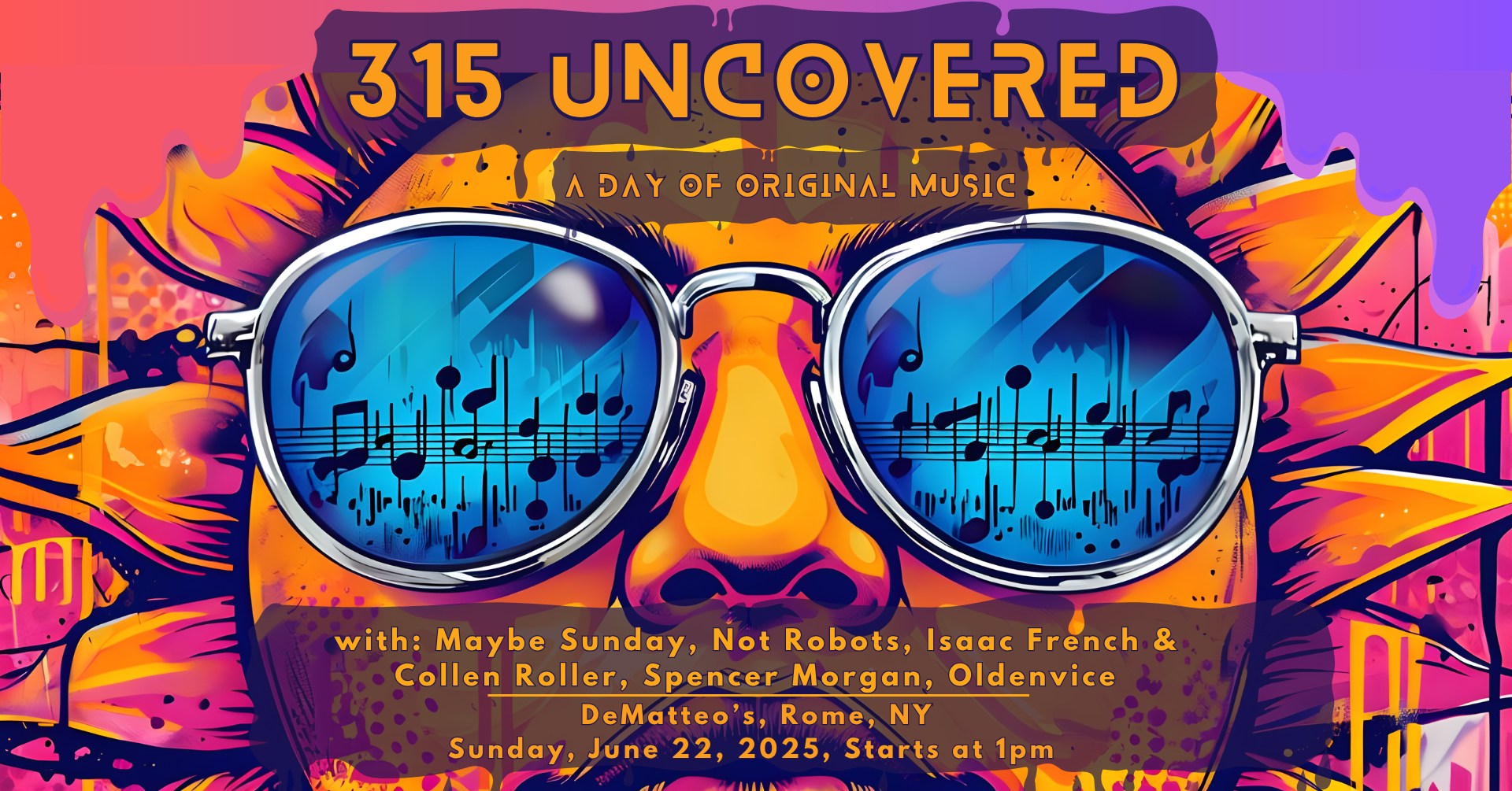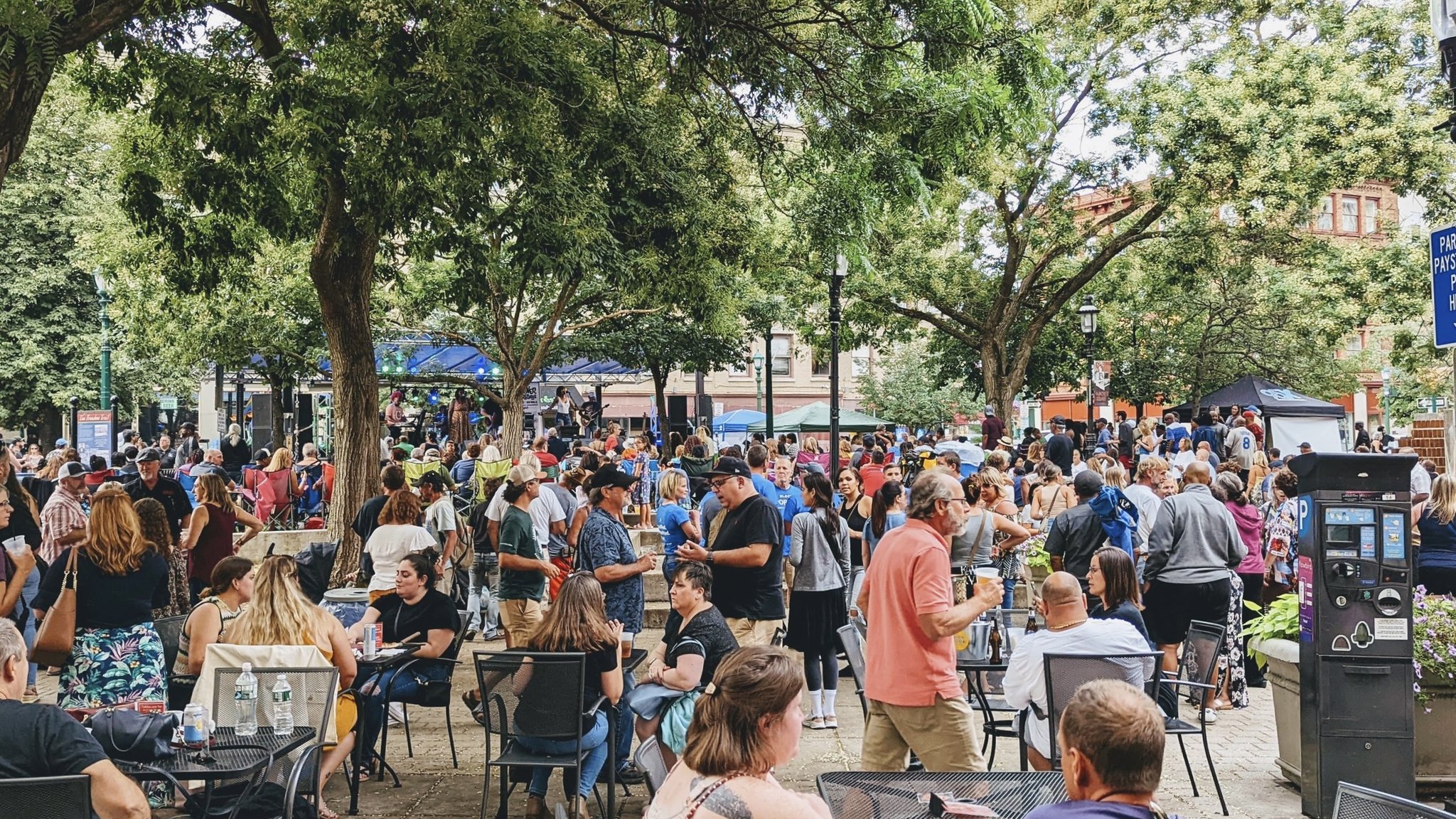Brit Floyd, with hometown bassist/vocalist Ian Cattell, will return to the OnCenter Crouse Hinds Theater in Syracuse on Wednesday, April 19. Tickets for the show are still available through Ticketmaster or at the venue.
Catell was raised in the Syracuse area and has been part of the Central New York music scene for years. He has been a member of Brit Floyd since the band’s inception and still calls Central New York home.
Formed in 2011, Brit Floyd features performances supported by an immense, immaculately curated state-of-the-art production, reverently emulating the stunning soundscapes and visuals of Pink Floyd’s iconic catalog. Brit Floyd is a celebration of authenticity, featuring musicians handpicked by Damian Darlington.
“50 Years of Dark Side” celebrates the 50th Anniversary of Pink Floyd’s masterpiece album The Dark Side of the Moon. For this year’s world tour — featuring over two and a half hours of Pink Floyd music encompassing the band’s iconic career — the team has created a show that includes state-of-the-art visuals (lights, lasers, and animation) with immersive soundscapes and virtuosic musicianship.
315 Music’s Mike Kohli and Kathy Stockbridge recently sat down with Cattell at Funk ‘n Waffles in Syracuse to discuss Brit Floyd, the influence of Pink Floyd, his Central New York music past, and the unique instrument he plays called the Chapman Stick.

Kathy Stockbridge: What is it like to get a production like this together? Have you ironed it all out? Is it like second nature for you now?
Ian Cattell: It’s second nature for me. My piece of the puzzle is relatively simple. But I have had to rethink a lot of things because we have gone through some massive changes in a lot of ways. In our previous situation, we owned the lights and rented the sound. Now we’re going full renting of lights and sound. We’re changing our relationships with some of the companies we deal with. It’s all a good thing. When you do a lot of shows and have a lot of lights, it’s more economical to do it this way.
Basically, all the musicians and the key crew members are the same. We have continuity. I’m really looking forward to what they’ve come up with.
KS: I assume you’re doing all the music from The Dark Side of the Moon?
IC: We’re focusing on The Dark Side of the Moon, yes. Think of it like a theater show in that respect. Every light that comes on is pre-programmed and pre-thought-out. Every scene and every light has been pre-programmed to do that over the past couple of months.
KS: Is it harder in a live show to implement all of the sound effects that occur on the albums?
IC: It can be. When you’re in a live situation, every room sounds different. We created all of those sound effects on our own.
Funny story, we don’t like to lift samples directly from the album. We like to try to create them. Some of them are a lot easier than others. For instance, almost everything you hear on The Dark Side of the Moon, apart from the voices, comes from the BBC sound library, which is the equivalent of the public domain in the UK. They used those samples back then and you get those same samples now. There are plenty of voices you hear on the album, that are obviously different. There’s an interesting story behind that too. They wrote questions on index cards and handed them out to the sound engineer or even the person who sits at the reception desk and recorded their responses.
KS: I read someplace that they asked Paul McCartney some of those questions but his answers sounded very rehearsed.
IC: Yes, they very much liked the candid response. Some were a bit off the wall. One of the questions was, “When was the last time you were really violent?” I can imagine Paul McCartney, who is a very sunshiney kind of guy, would probably give a very measured response to that. They were looking for more off-the-cuff things.
KS: In today’s music, you see artists releasing a lot of singles and EPs. Pink Floyd took their time making this album as one piece of work. What are your thoughts on the way that music is produced now?
IC: I do think there’s value in creating a larger piece rather than just going for the two-minute single. But then again, that’s how it used to be originally. In the ’50s and ’60s, it was all about the two-and-a-half-minute song. The Dark Side of the Moon was pretty early on in the concept album genre. I do kind of prefer that. I’m a prog rock guy at heart. I like to listen to albums in their entirety on my own. That’s one of the reasons I don’t really stream music. I have a collection of music at home that when I want to listen to something, I put on an album or put on a CD. I think there’s something missing when I listen to a playlist. But if you’re into listening to a collection of singles or a mixtape — we all made mixtapes — then that’s fine too. It’s a different world out there.
KS: What’s your go-to album?
IC: During the pandemic, and it’s still kind of echoing right now, I’ve been reviewing the Genesis stuff pretty hard. I’d say probably the Genesis Live album, which is from the Gabriel era, or Seconds Out, or A Trick of the Tail, which I’ve been listening to pretty hard the past couple of months.
Mike Kohli: So with a hometown show, do you get hit up by a lot of people to be on the guest list?
IC: Occasionally, yeah. Thankfully, I get along with the promoter really well. He’s a fan of the band. If it’s a sold-out show, that may be more difficult.
MK: I noticed the tour schedule. There’s a conspicuous gap in between Cleveland and Wilkes-Barre on May 20, which just so happens to be National Booty Day…
IC: As in?
MK: The United Booty Foundation
Editor’s note: The United Booty Foundation was a CNY institution back in the ’90s. The funk cover band has reunited throughout the years for charity events and will be performing at Sharkey’s in Liverpool on May 20.
IC: Yes?
MK: At Sharkey’s in Liverpool. Is there going to be an Ian sighting at Sharkey’s?
IC: I don’t know. I was around for…they were planning one at the OnCenter, I think it was last year, it was supposed to be a big charity event. But it didn’t end up happening. But they were to the point of doing rehearsals. And even though I was at Steve’s house when that was happening, I wasn’t part of it then.
It’s probably a gap in the calendar because the ink isn’t quite dry for some of the dates. I think we’re in Columbus.
MK: Just a gap I noticed and it happened to be National Booty Day.
IC: Yeah, that would be a lot of fun. I’d have to go to a thrift store and find some animal print shirt to wear. When I was in the band, we weren’t totally dressing up. From the waist down you could wear anything you wanted. I would just go to the women’s section in the thrift store and find something crazy to wear.
MK: Are you still using the stage stuff from the ’94 Floyd tour?
IC: What it was, is that we had access to one of the pigs they used for that tour. We’re not currently using that. We found that it was easier for us to create one from scratch ourselves that required a little less maintenance. As nice as it was to have that piece of history, it almost, in a way, felt like it should be somewhere on display rather than being thrown into a case in a truck and then flown up in the air every night. That thing had some stories to tell. But it was time to put up his hooves.
MK: I’d like to talk about the Chapman Stick. I didn’t know anything about this instrument even though I’d been listening to music for a long time. The first real exposure I think I had to it was on “Elephant Talk” by King Crimson. And I heard Tony Levin playing this sound. I didn’t know where it was coming from. Didn’t know how it was being made. I thought it was studio trickery. That sound is so different, so unique. How did you come across this instrument and decide, “Let me pick this up.”?
IC: Well, the same way you did. I didn’t take a lot of bass lessons in my time, but there was this guy I took lessons with in the Syracuse area back in the day. And he was a Peter Gabriel, King Crimson, and Tony Levin fan. He just started playing different music, then he threw “I Don’t Remember” at me and then he threw on “Elephant Talk” and I just was absolutely enthralled with it. It took me a number of years but they had one in The House of Guitars in Rochester in that big round display when you first walk in the front door. There was a Chapman Stick there. It was just like out of Wayne’s World. I would walk in and ask to play it. Nobody ever said…
MK: No “Elephant Talk!”
IC: (Laughs) Yeah, just signs all over. That would be amazing. I was nowhere near good enough. When you pick up your first stick, you generally are a complete utter beginner because there’s nobody else around for you to play off of.

MK: For the person who has no idea what we’re talking about right now, how would you describe that instrument?
IC: It’s a little bit like a guitar that has no body. The idea behind it is that it’s played in a vertical way, almost like an upright bass but you don’t pluck the strings or pick them. You tap on it. Kind of like, there’s an artist named Stanley Jordan, who was famous for doing that way back in the early ’70s. Then you have guys like Eddie VanHalen. The idea is that you’re always tapping it. It also has a peculiar setup where there are guitar strings and bass strings on it and they actually have separate outputs. So you can play guitar parts with guitar effects on it and a separate amplifier is the bass amplifier. You use eight fingers at once. Because it’s played upright you don’t have this awkward thing where some of the fingers are parallel to the strings and some are perpendicular. There’s very easy access to all the strings on it. The way Tony Levin developed it, he used a lot of compression to get that crazy sound you were talking about. Very percussive. This sounds more like you’re taking a metal hammer and striking a string with it. Slapping bass comes a little close to it in sound.
Tony Levin was asked to play on A Momentary Lapse of Reason and the producer (Bob Ezrin) also produced Peter Gabriel’s second album. Tony brought the stick to that session as well and Ezrin said, “Put that thing away. I don’t even want to see that.” Apparently, he gave it another thought by the time A Momentary Lapse of Reason was being recorded, Ezrin said, “Remember that thing you had that I told you to put away, why don’t we give that a try?”
After talking with Tony about it, he doesn’t really remember which songs have stick and which ones don’t. He basically played stick and bass on everything he was asked to play on and they just selected them after he already left the studio. I asked him which songs he played stick on and he said, “I don’t know, I haven’t listened to it.”

KS: It sounds like an instrument that every person who plays it can have their own sound.
IC: Oh, absolutely, but you can say that about most. It’s something that asks for you to create your own sound from the start because it’s a relatively rare instrument and there are so few people who play it. Tony has a very distinct sound, so I’d say at least half of the stick players go for that Tony sound. But there are a lot of other stick players that play a variety of different music, it varies from folk music to classical. It can be thought of as a harpsichord kind of sound. So there’s a wide range of musicians who play the stick. They all have their own take on it.
MK: When you first picked this thing up, did it completely flip the way you thought about creating music?
IC: Well certainly when I had it in my hands. It was tough. I still consider myself to be a guy who has a stick rather than a stick player. I play a lot of songs on the stick, but they tend to be…I’m kind of a cover band artist. That’s how I spend a lot of my time. I have a lot of original works that I’m sitting on. But, for the most part, I use the stick as a tool. I get it out when I’m playing a song that asks for it. It’s not necessarily always a song that was recorded with a stick but sometimes it hits me that this song should really have a stick on it.
MK: So that’s where you kind of where you do your kind of improvisation when you’re doing the Floyd show?
IC: Well, with the Floyd stuff a little bit less because we are kind of going out there to represent the music as it was. That’s not to say as a bass player I might have a bit of leeway here and there. I’m not taking guitar solos. When my bass line is melding into the rest of the band, it doesn’t stand out so much.
For instance, since we’re focusing on The Dark Side of the Moon on this tour, I’ve actually taken great pains to re-center the bass parts for all the Dark Side of the Moon stuff that was on the original album. As opposed to, sometimes I play a bit of what I’ve heard on a live version. It’s interesting because those parts could kind of morph all the time if you don’t review it. So I’ve spent a lot of time over the past few months listening to Dark Side of the Moon with fresh ears. That’s not to say we don’t take liberties on purpose occasionally. We often get comments from people, “We love how you are so faithful to the original but we can also hear when you put your own personality on it.”
KS: Really? Do you get that a lot?
MK: That’s a big compliment coming from a prog crowd.
IC: Well, yeah, that’s one thing — the Floyd fandom is quite exacting I would have to say. There’s nothing like someone of our generation or older that has listened to Dark Side of the Moon thousands of times and then they come and see us. They can tell even if they’re not a musician, they can tell when we kind of go off-script. It’s fascinating to hear what they do pick out.
KS: What are some of the downsides of being in a cover band?
IC: It’s less of a creative outlet. I’d love to be out doing my own thing and playing my own music, but that’s a very improbable thing these days. Beyond that, another downside is the length of time we’re away from home. We are out on the road — the last few years notwithstanding — we’re out about nine months out of the year.
KS: What kinds of things do you do to take care of yourself when you’re out on the road?
IC: I try to keep active. I try to take walks or runs every day. I used to take my bike out on the road. Taking those days off and doing things to help clear the mind, keeping in touch with people. Obviously, these days, being able to see the people you’re talking to is no replacement, it’s a big help.
KS: Do you get to take advantage of the places that you visit?
IC: Yeah. On certain days, we have a day off in an interesting place, and on other days we’ll be in a hotel off an exit of a highway with an Applebee’s next door and a Burger King and that’s it. But other times, you might find yourself on a day off in the middle of Rome. I have to be very thankful for all the amazing places I’ve seen and been to. There are other times when the best option is to stay in your hotel room and read a book.
KS: What are some of your favorite places you’ve been?
IC: As far as the culture and especially the scenery, I really love touring Norway. It’s just utterly spectacular. Everywhere you look is a postcard. Even when I talk to locals and tell them I went here and there and they went, “Oh, really?” It’s gorgeous to me. I mean right now, looking out the window here, there’s nothing wrong with Clinton Street, obviously, some trash can got knocked down and there’s trash strewn everywhere. I wouldn’t say that’s representative of Syracuse but ya know. I didn’t see anything like that in Norway, but maybe I was just there on the right days, who knows?
KS: Are there any bucket list places you’d like to see?
IC: I’d like to see Norway in the wintertime. I like cross-country skiing and all that.
KS: What about venues? You’ve already played Red Rocks.
IC: Well, I’d like to play Pompeii. They’re doing gigs there now. You always kind of figured that it was just a world heritage site, but they’re doing shows there. It’s not just Pink Floyd and David Gilmour have played there recently. We played Red Rocks and Albert Hall.
KS: You obviously play off your audience. Do you find audiences in certain places are a little more into it or more subdued?
IC: Oh, yeah. When we tour in the UK, they’re very quiet. And in Norway, they’re very quiet until the end of the show. It’s almost like they’re treating it like a symphony. You don’t applaud in between movements, you wait until the end. So at the intermission and at the end, they go nuts and you go, “Oh, OK, you were listening! That’s great!”
When we play in some of the former Balkan states, the crowd is much younger. The kids who grew up or were born after the war grew up in a different culture than their parents did. All the people coming to our shows were in their 20s, which is amazing. For being absolutely not a rock star, the audience was thousands of people and you get the kind of attention you don’t necessarily get elsewhere.
KS: Do you think music is timeless? What makes it timeless?
IC: I think certain music stands the test of time. We’re still listening to Mozart, Beethoven, and the like and probably will be for hundreds of years. I don’t know if Pink Floyd is going to have that same longevity but so far they have and for that same reason. Between the lyrics and the music, it is timeless. Not to say that very complicated music will stand the test of time, I’m a prog head at heart, but there’s one thing about Pink Floyd, you give room for the music to breathe, they pay attention to the rests as much as they do the notes and most of Roger’s lyrics and even some of Gilmour’s are very concise and to the point and apply over time. I mean, how do the lyrics of “Money” not apply today as much as they did in 1973?
MK: Are you going through the whole album front to back on this tour?
IC: We’re not. We are highlighting the 50th anniversary of The Dark Side of the Moon and celebrating the music of Pink Floyd.
I have a special connection to this venue. The very first time I played there as part of Brit Floyd or any Floyd tribute, was 30 years to the week of my first performance there. Cazenovia High School used to do its end-of-the-year concerts at the civic center. Even though all the paint was different colors in the backstage area, it was just a major walk back into my childhood to play there. So it is special to play in my hometown and special to play in a place where I have memories of playing when I was in high school.
KS: Do you find it harder to concentrate at a hometown show?
IC: Let me put it this way, I’m glad our first show of this tour isn’t in Syracuse. The Syracuse show is very early in the tour so hopefully some of the kinks will be ironed out and I can enjoy the moment. I see so many familiar faces in there. It’s a cozy enough place where I can see everybody a lot of the time.
KS: What do you want your legacy to be in music?
IC: I need to come out with an album. I’m sitting on material. It’s one of those things where I’m so busy in other parts of my life, it’s very slow in developing. I want to have something out that’s mine. As far as for what I do for a living, I want people to remember coming to our shows and having a wonderful time. I want to have them feel like they’ve been transported back to when they heard the album for the first time or when they saw Pink Floyd. That’s one of the reasons I’ve kept doing it for as long as I have. I feed off the audience in kind of a vampire way, just seeing their reaction, it gives me the energy to keep doing it. If we were only playing for certain audiences who were quiet all the time, it wouldn’t be quite as rewarding. I get the impression that that’s going to be my actual legacy: of people looking stuff up on YouTube and remembering seeing Pink Floyd play when they see us play.
The 2023 touring band includes Darlington (guitarist, vocalist, and musical director), Ian Cattell (vocals, bass), Edo Scordo (guitars, vocals), Matt Riddle (keyboards, synths, Hammond, vocals), Arran Ahmun (drums, percussion), Ryan Saranich (saxophone, percussion, guitars, bass, keyboards), Randy Cooke (drums and percussion), Eva Avila (lead and backing vocals), Genevieve Little (backing vocals), Jessie Lee Houllier (backing vocals) and Chess Galea (backing vocals).



